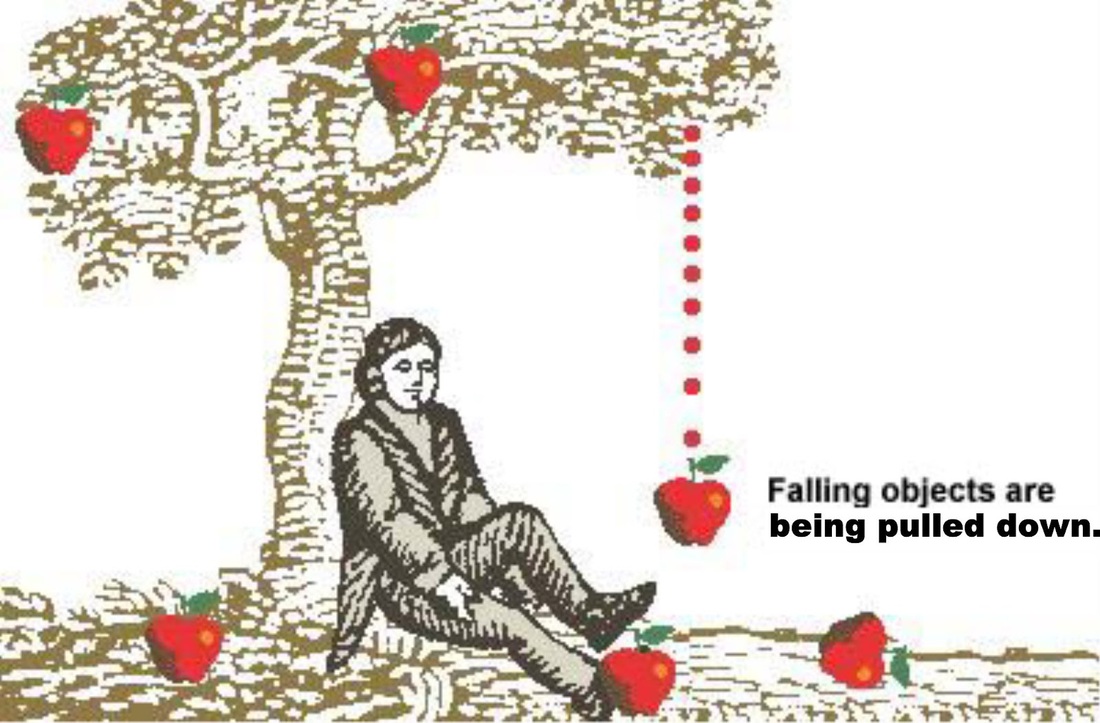

We assume that the Moon's orbit is a circle, and that the Earth's pull is always directed toward's the Earth's center. If you want to check the calculation, a hand-held calculator is helpful. Here we will retrace the calculation, which linked the gravity observed on Earth with the Moon's motion across the sky, two seemingly unrelated observations. Richard Feynman, Nobel-prize winning maverick physicist, rederived such a proof (as have some distinguished predecessors) see reference at the end of the section. Interestingly, however, the proof which Newton published did not use calculus, but relied on intricate properties of ellipses and other conic sections.

Nowadays students who derive Kepler's laws from the "inverse-square law" use differential calculus, a mathematical tool in whose creation Newton had a large share. He was then able to show that Kepler's laws were a natural consequence of the "inverse squares law" and today all calculations of the orbits of planets and satellites follow in his footsteps. Newton went further and proposed that gravity was a "universal" force, and that the Sun's gravity was what held planets in their orbits. Newton showed that if gravity at a distance R was proportional to 1 /R 2 (varied like the " inverse square of the distance"), then indeed the acceleration g measured at the Earth's surface would correctly predict the orbital period T of the Moon. To calculate the force of gravity on the Moon, one must also know how much weaker it was at the Moon's distance. The distance was first estimated in ancient Greece-see here and here. The orbital period we know-it is the lunar month, corrected for the motion of the Earth around the Sun, which also affects the length of time between one "new moon" and the next. If it was the same force, then a connection would exist between the way objects fell and the motion of the Moon around Earth, that is, its distance and orbital period. ( Keesing, R.G., The History of Newton's apple tree, Contemporary Physics, 39, 377-91, 1998) Why not as high as the Moon thought he to himself & that if so, that must influence her motion & perhaps retain her in her orbit, whereupon he fell a-calculating what would be the effect of that superposition. to his mother in Lincolnshire & while he was musing in a garden it came into his thought that the power of gravity (which brought an apple from a tree to the ground) was not limited to a certain distance from earth, but that this power must extend much further than was usually thought. In the year 1666 he retired again from Cambridge. John Conduitt, Newton's assistant at the royal mint and husband of Newton's niece, had this to say about the event when he wrote about Newton's life: Supposedly, the above question occured to Newton when he saw an apple falling from a tree.


Was that the same force which pulled all falling objects downward? To keep the Moon moving in that circle-rather than wandering off-the Earth must exert a pull on the Moon, and Newton named that pulling force gravity. Since its size does not appear to change, its distance stays about the same, and hence its orbit must be close to a circle. (20) Newton's theory of "Universal Gravitation" Index


 0 kommentar(er)
0 kommentar(er)
